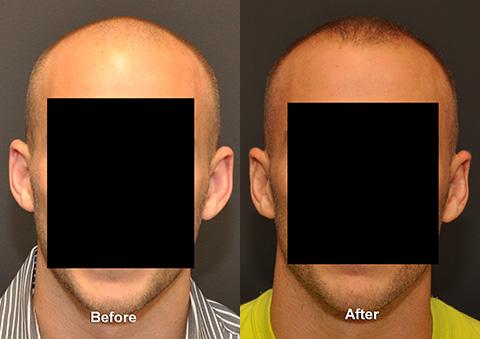Isn’t it incredible how our ears play a vital role in our overall appearance? Whether we’re talking ear pinning, ear reduction, or ear augmentation, cosmetic ear surgery can make all the difference. With so many types of ear surgery available, how does one choose? Let’s dive deep into the world of ear cosmetic surgery and discover what each method entails!

Why Consider Cosmetic Ear Surgery?
Importance of Ear Aesthetics
Our ears, believe it or not, significantly influence how our face is perceived. Balanced appearance matters and can boost confidence. The benefits of surgery include not just medical gains but also aesthetic enhancements. Ever noticed how a slightly off-kilter frame can distort a beautiful picture? That’s how our ears, and their specific ear shape, can impact our facial symmetry.
Why People Opt for Otoplasty
Some folks are born with birth defects affecting ear size or shape or possibly with excess cartilage. Others may have suffered an ear injury that altered its natural shape. Or perhaps, due to wearing heavy earrings, some individuals experience stretched earlobes. Regardless of the reason, it’s merely a personal preference to change the appearance of their ears with the help of a facial plastic surgeon.
Understanding the Basics of Ear Surgery
What’s Involved in the Surgery?
Otoplasty procedures are a type of ear surgery often performed by a board-certified plastic surgeon. Anesthesia is administered, ensuring you feel no discomfort, although there might be mild discomfort post-surgery.
The surgical procedure typically involves making incisions behind the ears, altering the cartilage, and creating ear folds, if necessary. Some procedures may use permanent sutures, while others might prefer dissolvable sutures. In specific surgeries, special sutures might be employed to maintain the ear shape for an extended period.
Post-Surgery Care
After ear correction surgery, it’s crucial to follow the surgeon’s instructions. Understanding the recovery process is essential. Keeping the head elevated can prevent blood clot formation. Avoiding contact sports can ensure the ears heal without interruptions. Wearing a headband at night might feel odd but is essential for the healing process. Pain medication will be provided to manage any discomfort.
Ear Pinning
How Does Ear Pinning Work?
Ear pinning surgery, as the name suggests, involves “pinning” the ears closer to the head, which differs from traditional otoplasty procedures. Surgeons achieve this by reshaping the ear cartilage, bringing about a more natural look.
Benefits of Ear Pinning
- Improved head proportion
- Enhanced self-esteem
- Reduced discomfort when wearing shirts or glasses
Ear Reduction Surgery
The Need for Ear Reduction
For those self-conscious about the size of their ears, ear reduction can be the answer. This type of ear surgery, often termed reduction otoplasty, specifically focuses on addressing oversized ears and enhancing facial symmetry.
Whether it’s genetics, aging, or other factors that contribute to larger ears, this procedure is tailored to cater to individual needs. This type of plastic surgery reduces the ear’s overall size, bringing it into proportion with the head, thus aligning with the facial aesthetics.
Post-Reduction Expectations
Once the ear reduction surgery is done, expect some stitches and a recovery period. Surgeons often advise against certain activities initially, especially those that could put pressure on the ears, like sleeping on the side or wearing certain headgear.
It’s essential to avoid direct sun exposure and follow care instructions for the incisions. It’s vital to attend follow-up appointments to ensure everything’s healing as it should and to monitor for any complications.
Ear Augmentation Surgery
Why Choose Ear Augmentation?
Some individuals, either due to genetics or trauma, feel their ears are too small or lack definition. Ear augmentation addresses these concerns. It adds size and shape, creating a balanced appearance and improving the profile view of the individual.
This procedure gives them a chance to enhance their natural features, thus boosting their self-esteem and confidence.
The Augmentation Process
For ear augmentation, cartilage is harvested, usually from another part of the ear or sometimes from other body parts. This cartilage is then sculpted and grafted to the existing ear structure, ensuring increased size and better definition.
This surgical technique ensures a natural shape and appearance, seamlessly integrating with the existing ear form and providing lasting results.
Potential Risks and Considerations
Adverse Reactions and Allergies
While surgical advancements have made these procedures relatively safe, risks remain. Though rare, there’s always a chance of an allergic or adverse reaction to anesthesia or even the materials used during surgery.
It’s essential to discuss any medical history, especially previous allergic reactions or medications, with the plastic surgeon during the initial consultation to mitigate these risks.
Revision Surgery
No surgery comes with a 100% satisfaction guarantee. Previous ear surgery might not always result in the desired outcome, whether due to the healing process, complications, or personal expectations. In such cases, a revision surgery could be considered. This isn’t a reflection of the surgeon’s skills but rather the body’s unpredictable nature of healing.
Always trust an experienced plastic surgeon to evaluate and advise on the best course of action.

Results: What to Expect?
Immediate Aftermath
The hours following the procedure might involve some discomfort, ranging from mild discomfort to more pronounced pain, which can be managed with medications. Sedation effects wear off gradually, and it’s essential to have someone accompany you post-surgery. Stitches and sutures, whether special sutures or standard ones, are typically present and require care to avoid accidental tugging or damage.
Long-Term Outcomes
Over time, results become more evident. The ears should look natural, with improved symmetry and proportion. Remember, individual healing rates vary, so patience is key.
Regular follow-up appointments will track progress, ensuring the surgical area is healing correctly, and the desired ear shape is maintained. Being informed about potential long-term care, like avoiding certain activities or wearing protective gear in contact sports, ensures the durability of the results.
Remember Dr. Donath for Otoplasty
Whether you’re considering ear pinning, ear reduction, or ear augmentation, it’s crucial to consult with a specialist. Dr. Donath has years of experience in all types of ear surgery and can guide you through every step. Your journey to a more confident you start with booking an appointment today.


